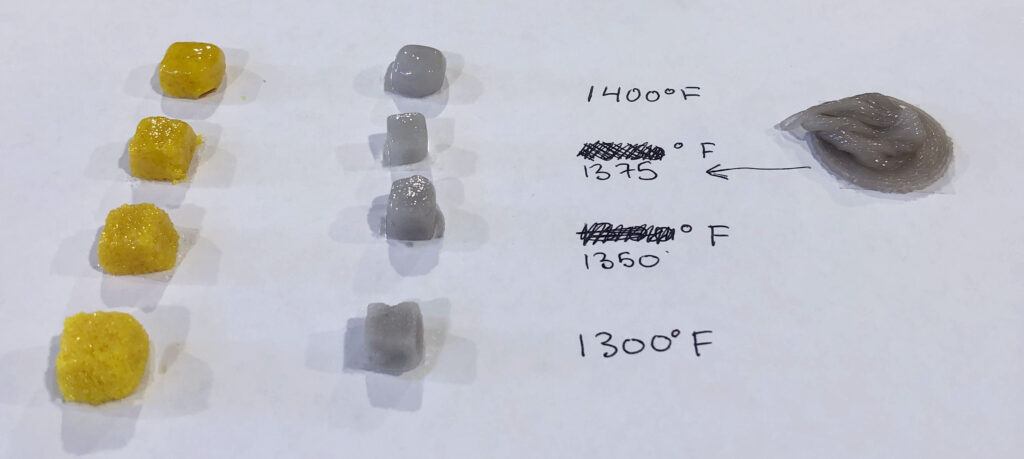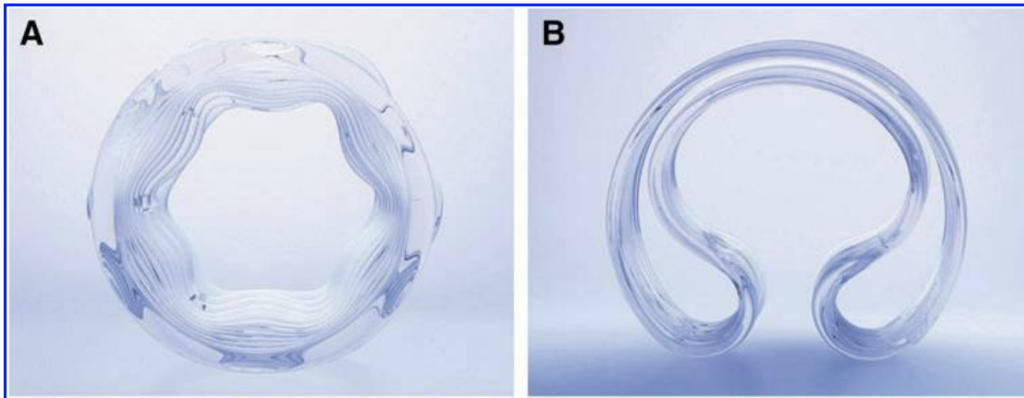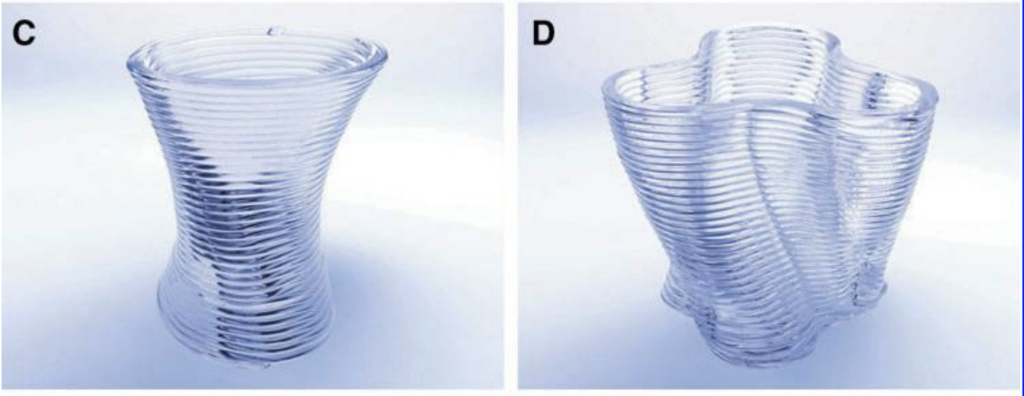I would like to explore 3D printing with glass for my final project. This will be an extension of the clay and metal 3D printing that the Hand and Machine lab has been exploring. Glass is made up of similar materials to clay, so I will try to use my knowledge of clay and glazes to find a recipe for a printable paste that when fired will yield glass objects. We have just begun to play with glass frit to build a recipe in the lab, and I would like to use this final project to expand and grow on this work. Below are some preliminary firing tests.

Deliverables
- A reliable recipe for a paste made from glass frit that can be printed with the Eazao clay 3D printer.
- A kiln program(s) that works with the recipe above to fire the 3D printed objects into glass.
- A range of possible sizes and types of forms that work with this process.
- Five to ten objects 3D printed and made out of glass.
- Grasshopper scripts that generate the gcode for the type of 3D prints that will work with this method.
- A grasshopper definition that takes in a form, the nozzle size that was used to print it in glass, and the firing temperature and uses the Kangaroo plug-in to predict the shrinkage and slumping that will occur in the final shape.
Timeline
- Nov 3: Mix and test glass paste recipes that have the correct rheology for printing well with the Eazao clay printer. Print small cylinders.
- Nov 7: Dial in a kiln program that will sinter those cylinders into glass without slumping.
- Nov 14: Print larger and more complex geometries and figure out how to fire them without slumping.
- Nov 28: Play with printing glass and clay together.
- Dec 8: Make lots of objects!
Research
Below are a few papers and documentation I found interesting and helpful. The first is by John Klein, Michael Stern, and Giorgia Franchin from Neri Oxman’s Mediated Matter group at the MIT Media Lab. They built a glass 3D printer that prints molten glass. I am hoping to be able to 3D print glass in a much more affordable and accessible way, but I thought it was a cool project to research and highlight. The next paper investigates making transparent silica glass through powder sintering. The third is about making glass-like sintered material from metallurgical waste. The last is technical documentation of heat and glass from Bullseye Glass, which is where we get our glass frit.
- https://oxman.com/files/85c33ef4-ca38-4a13-919a-4ca1df71bf25/Additive-Manufacturing-of-Optically-Transparent-Glass-(2015).pdf
- https://iopscience.iop.org/article/10.1016/S1468-6996(02)00030-X/pdf
- https://www.ncbi.nlm.nih.gov/pmc/articles/PMC8123903/pdf/materials-14-02263.pdf
- https://www.bullseyeglass.com/wp-content/uploads/2023/02/technotes_04.pdf



Hello Camila, I never thought you could print with glass. As you explain, I can understand why printing with glass is similar to glass. I was able to find some videos on 3D printing with glass and it looks really cool. I wish I could offer some help but you are clearly way more experienced then me in these things. I can’t wait to see the you objects you bring. I was also curious, the process with using the kiln for glass. I bet it must be really interesting making sure the object doesn’t break. Good Luck!
Camila, this sounds like a wonderful project! I was looking at studying at RIT, and they demoed a molten glass printer (https://www.rit.edu/spotlights/molten-glass-3d-printer), which certainly grabbed my attention.
Is there a particular frit that you’re looking at working with, or are you looking at a variety to meet your needs?